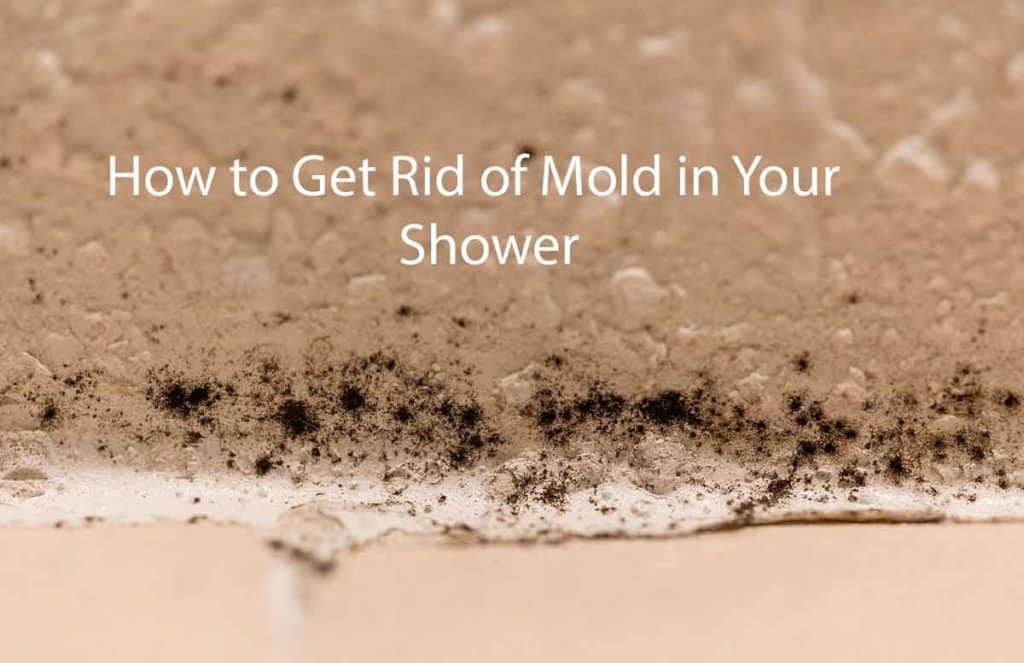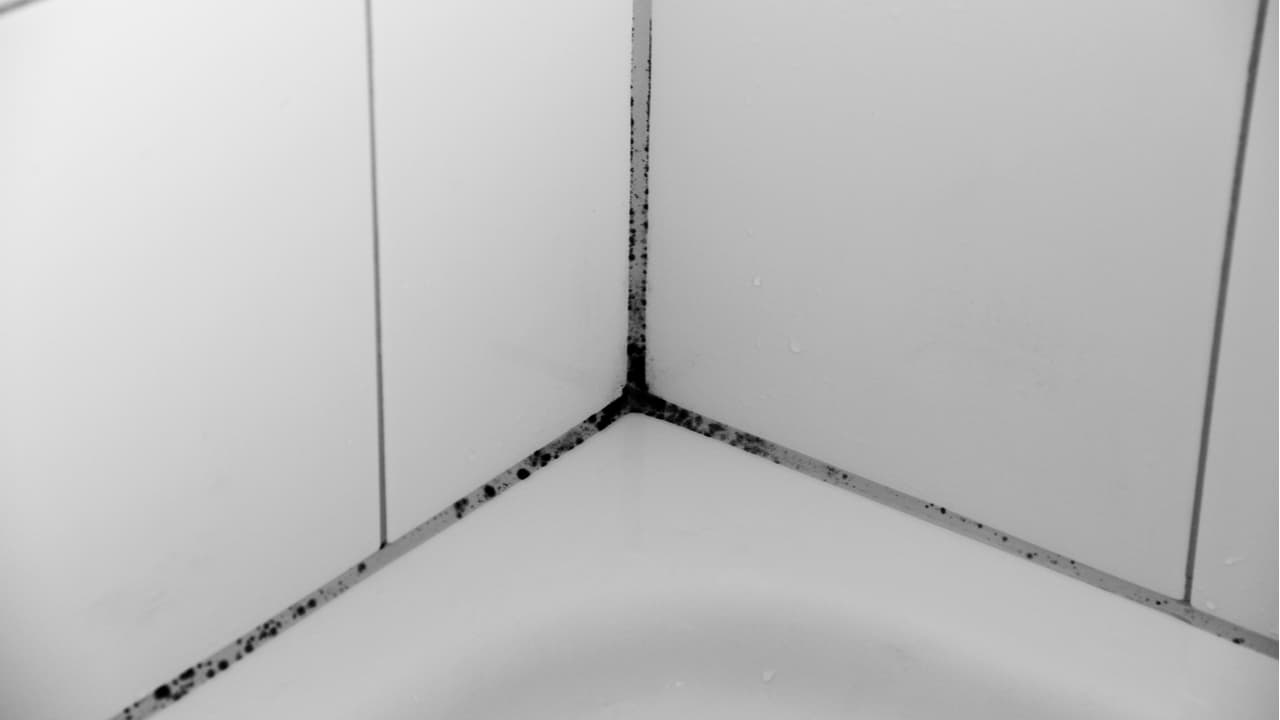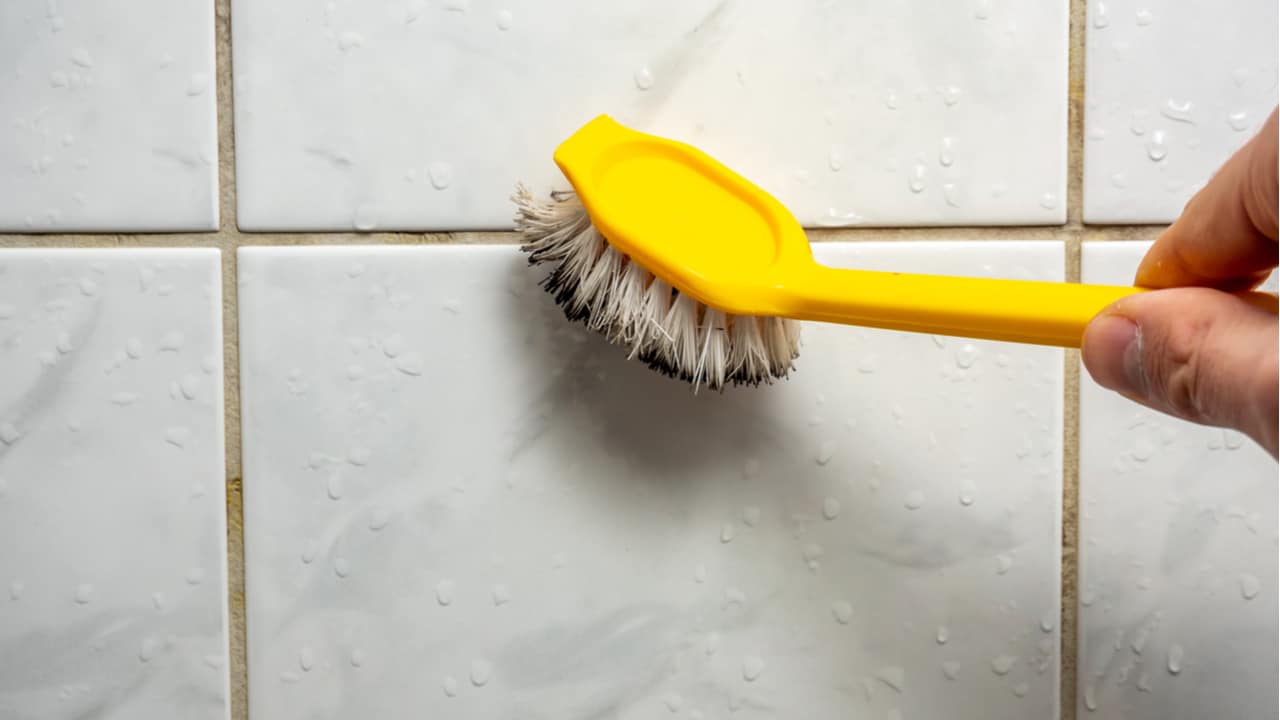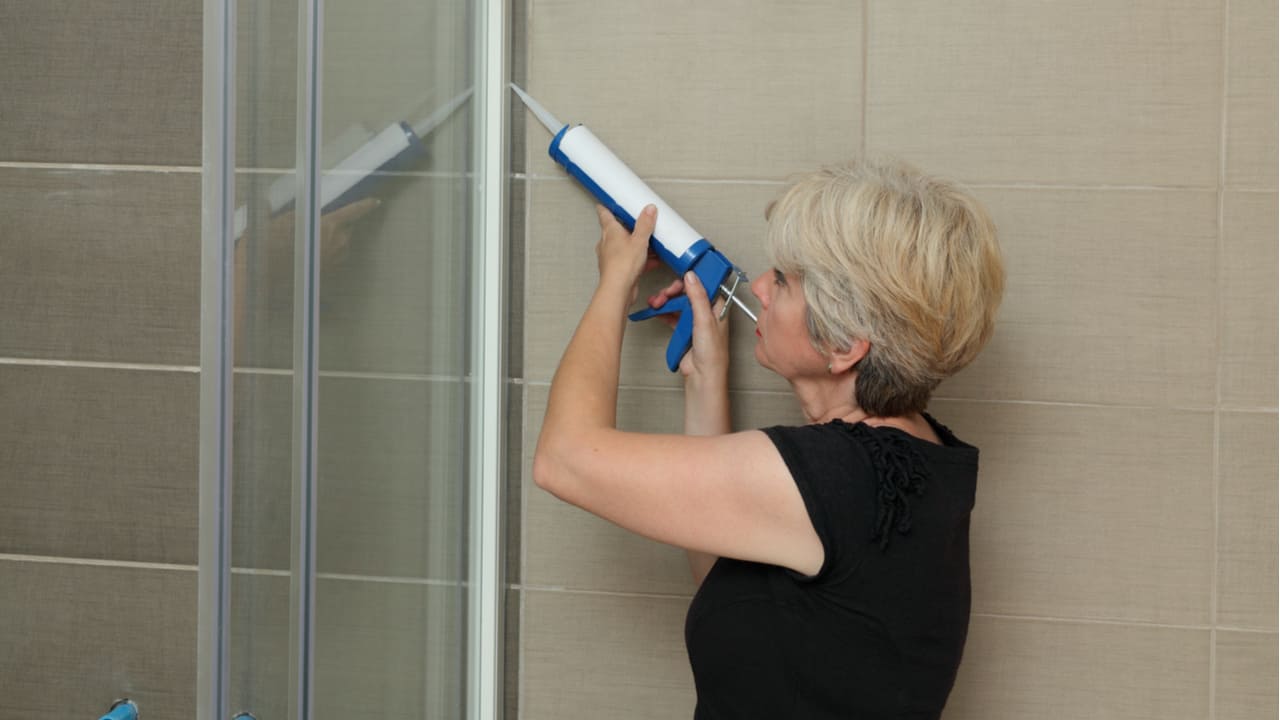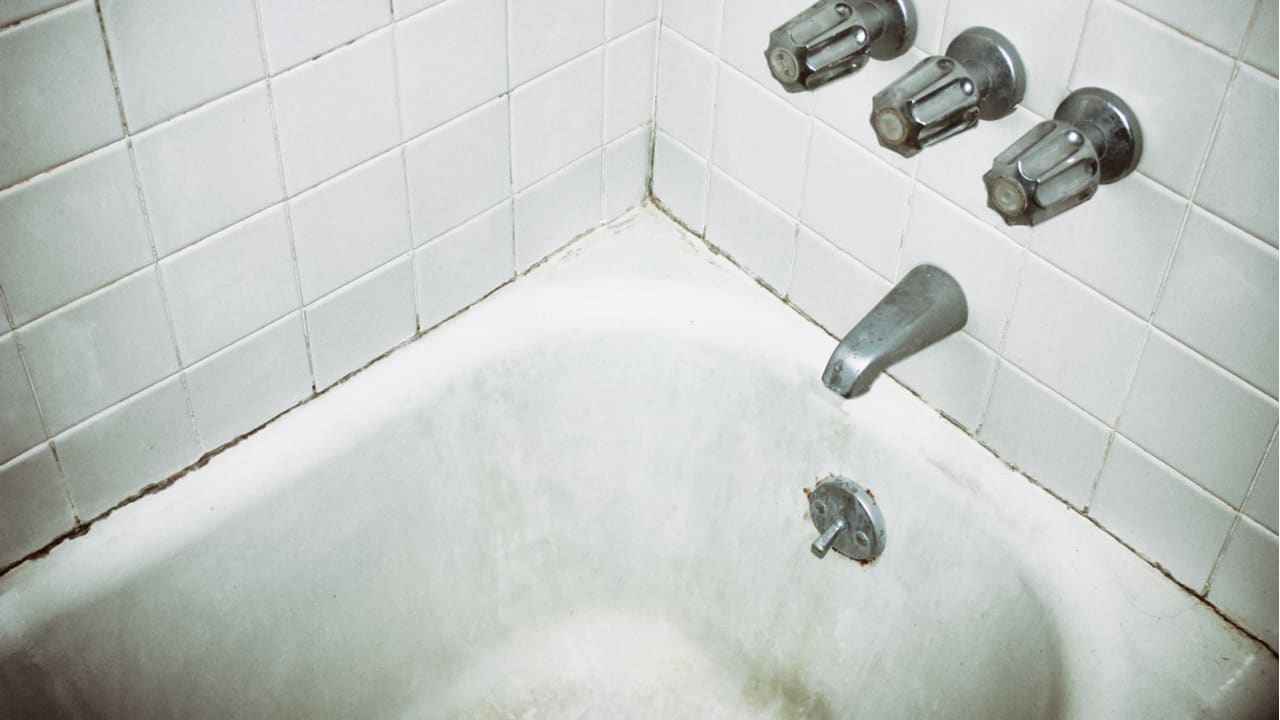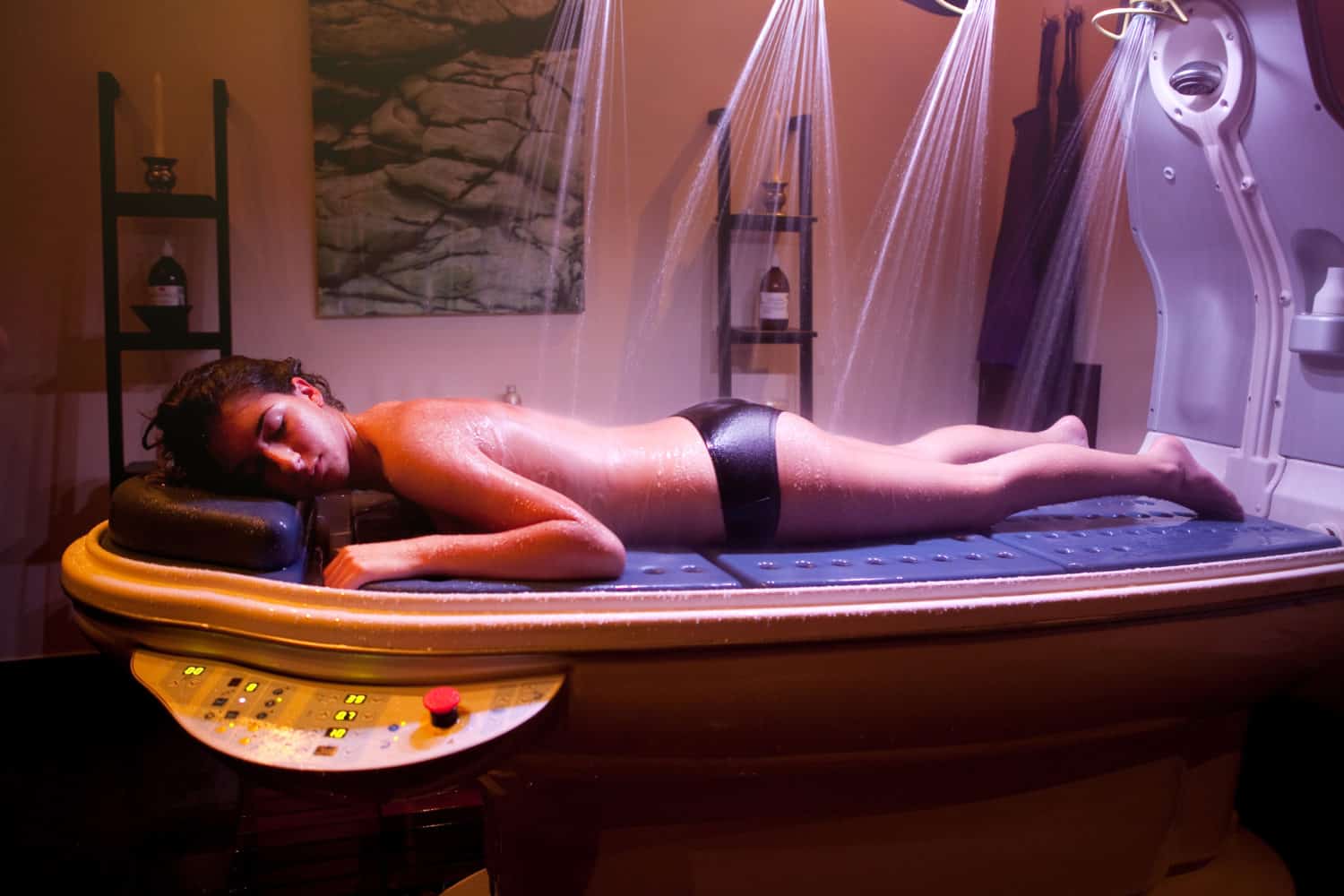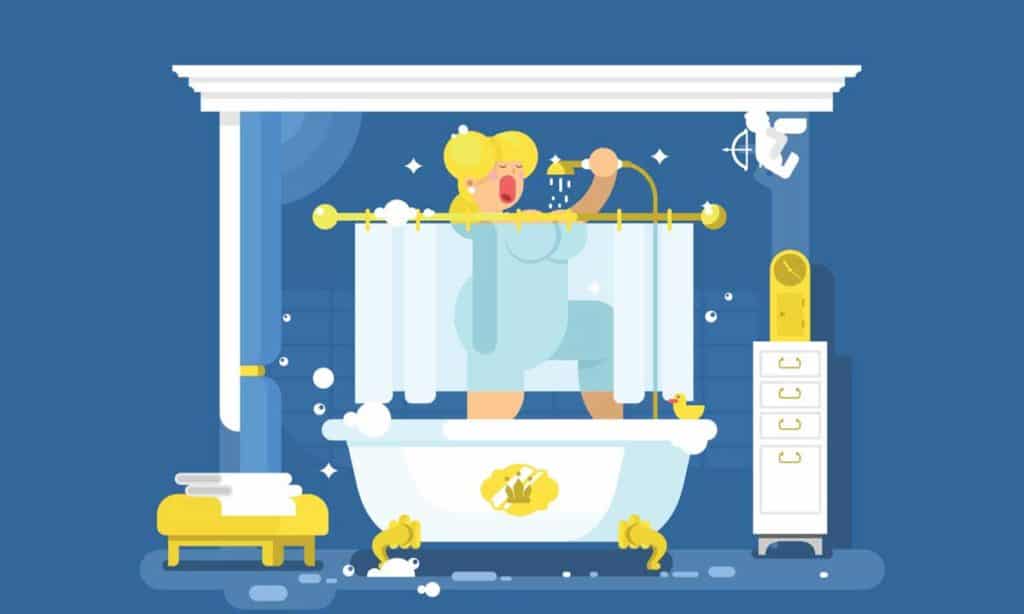Because of all the humidity and excess water, caulk, tile, shower walls, and other parts of a shower are the perfect place for mold to thrive. It can quickly find its way into every crack and crevice of your bathroom. And if you have a slightly clogged bathtub drain with standing water this can make matters worse. Start with the thinking – no excess humidity equals no mold anywhere in the shower.
Mold in the shower makes for an unpleasant sight but is mostly harmless. However, if you expose yourself to bathroom mold long enough, you might develop a mold allergy – a good reason to get rid of all mold in your bathroom.
Worry not, as how to get rid of mold in the shower and throughout the bathroom is quite simple. With a few magic ingredients and a bit of elbow grease, you’ll get rid of that pesky mold in your shower in no time.
Contents
How to Make a Mold Removal Solution
Create a Vinegar Solution
There are a few solutions you can use to remove black mold from your bathroom, but it’s best to start with the ones that are the safest. Vinegar is a natural, non-toxic mold killer.
It’s powerful enough to remove mold and mildew from a wide variety of surfaces, including shower caulk. For starters, you need a clean, empty spray bottle and some vinegar.
You can pour the vinegar into the bottle without diluting it. If you don’t water it down, it will deliver a better result. Spray the mold-covered areas with vinegar.
This solution doesn’t smell that nice, but the odor should clear within 2 hours. If your bathroom mold problem is a bit more serious, don’t rinse the vinegar away after you’re done.
But, if your mold problem isn’t so big, and you don’t want your shower to have an unpleasant scent, you can mix the vinegar with a bit of water.
You won’t compromise the antifungal power of vinegar by much if you add a bit of water, but you will reduce the pungent smell. This is also a better option for those who have a larger area to clean as they’ll have more liquid to work with.
You can also add a bit of baking soda to the mix. But be careful. When you mix vinegar and baking soda, the baking soda will foam up with carbon dioxide gas, which might make a mess.
Create a Borax Solution
Although it sounds like it’s a radioactive chemical, borax is actually a natural insecticide and fungicide. Mind you, it is dangerous to consume, but it doesn’t release toxic fumes.
Borax comes in the form of white mineral powder. You should be able to find it in the laundry section of your local grocery store.
All you need to do is mix 1 cup of borax with 1 gallon of water. Spray the solution onto the areas of your shower you want to clean. If you want to prevent black mold spores from coming back, don’t rinse it afterward.
Use a Bleach Solution
If you don’t manage to eliminate bathroom mold by using vinegar or borax, you can try using non-natural alternatives, such as bleach. Keep in mind, you should use bleach only as a last resort. Unlike borax and vinegar, bleach can release toxic fumes, so one should handle it with great care.
Bleach is really effective at removing black mold from non-porous surfaces, so it will more than likely solve your problem, but make sure to keep your bathroom well-ventilated while you are using it.
When handling bleach, it’s best to wear PVC gloves and a respirator mask. Wearing goggles is also a good idea. If you are exposed to bleach, it can cause skin, lung, and eye irritations.
Grab a spray bottle and add 1 part bleach to 10 parts water. Unless you have kids or pets who might touch the treated area, you don’t need to rinse the solution afterward.
Use the Cleaning Solution to Remove the Black Mold
Apply the solution to the moldy surface. Whether you’re using vinegar, bleach, or borax to kill mold, be generous with the solution, but don’t overdo it. There should be a visible, even coating.
However, if you use too much of the solution, the cleanup will be very messy. So, don’t let puddles form.
Use a Cleaning Cloth to Wipe Smooth Surfaces
Chances are, you’ll need more than one cleaning cloth, so it’s best to stock up before you get to work. If you don’t have spare rags, a couple of sponges will do the trick as well.
You’ll use them to clean the smooth surfaces of your shower. To make the job easier, fold a cloth into quarters. When the cloth gets too dirty or saturated, throw it away and use a new one.
Use a Scrubbing Brush
Wiping the area with a cloth or sponge may not be enough to remove mold stains if the black mold is very stubborn. If that’s the case in your shower: grab a scrub brush and scrub the mold stains and surrounding area vigorously.
If the black mold keeps coming back, you can continue using the brush to remove it. It will prevent the spread of black mold spores to other areas of your bathroom.
Use a Toothbrush to Remove Mold from the Caulk or Grout
To remove mold from caulk or grout, scrub the area with a toothbrush using a back and forward motion. To prevent mold from spreading to other areas of the shower, rinse the toothbrush with water after every few motions.
If you don’t have an old toothbrush, a larger scrubbing brush will do. You can also buy a specialty grout scrubber, they usually sell them in hardware stores.
Use a Cleaning Cloth to Dry the Area
To keep the shower dry, use a dry cleaning cloth to remove the excess liquid. Run it over all of the surfaces in the shower, including the caulk or grout. Again, if the cloth gets too saturated, you’ll need to swap it.
To prevent mold from coming back, make sure to pay special attention to tiny corners and crevices. Also, make sure you do a great job of cleaning the areas where liquid tends to pool up.
Replace Caulk or Grout
If the black mold buildup is too much to deal with, it’s best to replace the caulk or grout. To remove caulk, you can simply use a flathead screwdriver, but a. [amazon link=”B071XDP685″ title=”caulk removal tool” /] will work better. To remove shower grout, it’s best to use a [amazon link=”B000FSAV10″ title=”grout saw” /].
If you have grout between the tiles, the best thing would be to caulk the space between the tiles instead of re-grouting it. Replacing shower grout with caulk isn’t the most aesthetically pleasing solution, but it’s the best way to ensure that the black mold won’t come back.
For it to work, you must remove the shower grout completely. After you remove it, vacuum out the gaps. To fill in the gaps with caulk, you’ll need a [amazon link=”B07VB56TFB” title=”caulking gun” /].
If you want to use caulk to replace grout, you should be able to find sanded caulk in any tile shop or online store. It should match your existing grout color since most floor grouts are sanded.
Before you apply the caulk, clean the area with rubbing alcohol, wash it off, and then dry it off with a rag. Now you can apply the caulk. Smoothen the caulk with a spoon or wet finger. Let it cure for 2 days and make sure no one touches it.
To prevent the new caulk from getting stained, you can apply a sealer over it. And, to prevent the black mold from coming back, make sure to clean the caulk regularly.
How to Prevent Mold in the Shower
Turn the Exhaust Fan On
You need to try to reduce the humidity in the bathroom whenever you are in the shower. When you’re using the shower, make sure to turn on the bathroom fan.
After you’re done showering, let the exhaust fan run for a while. Ideally, you should keep it on until all the steam completely disappears. (see the best bathroom fans)
Open the Window
Each time after you step out of the shower, make sure to open the window. This will inhibit the mold growth.
If you can turn the fan on and keep the window open at the same time, that would be best. Keep the window open until the steam clears and the excess water evaporates.
Dry Every Surface You Can
After you’re done showering, look for areas where water likes to linger, such as shower tiles. Make sure to dry off the excess water this stops black mold growth. On tiles and glass doors, it’s best to use a squeegee. You can use a dry cleaning cloth for narrow areas. Even a small puddle of water can encourage black mold growth.
Regular Cleaning
We can do our best to keep the bathroom fresh and free of excess water and steam, but it will always be a room in the house that suffered from excess humidity. Regular cleaning of one of the best ways to stop mold growth – no time? Well, hire a cleaning service to make sure you don’t have the build up of any black mold problems or have a deep cleaning service every now and then.
Stay Safe
When working with household cleaners (especially bleach) it’s important to stay safe. If you’re using borax or white vinegar to get rid of mold, make sure to wear rubber gloves.
When using bleach to treat mold, you should wear PVC gloves. And, again, it’s best to wear a respirator mask whenever you’re handling bleach.
To prevent spreading mold spores throughout your home, take the gloves off as soon as you finish cleaning the shower.
Getting rid of mold growth can be a bit messy, so it’s best to wear old clothes. When you’re done, immediately wash the clothes in hot water. This will kill any mold spores that might’ve gotten trapped in the fabric.
Keep the bathroom well-ventilated during the cleanup. Open the window and turn on the fan. It may be a good idea to use a portable fan as well.
If you used vinegar or borax, vent the area until the smell disappears. If you used bleach, let the area ventilate for as long as you can— 24 hours would be best.
To make your bathroom an even healthier environment, consider replacing your shower curtain. Check out my What Is a PEVA Shower Curtain post as well as my post on the Best Extra Long Shower Curtains.
